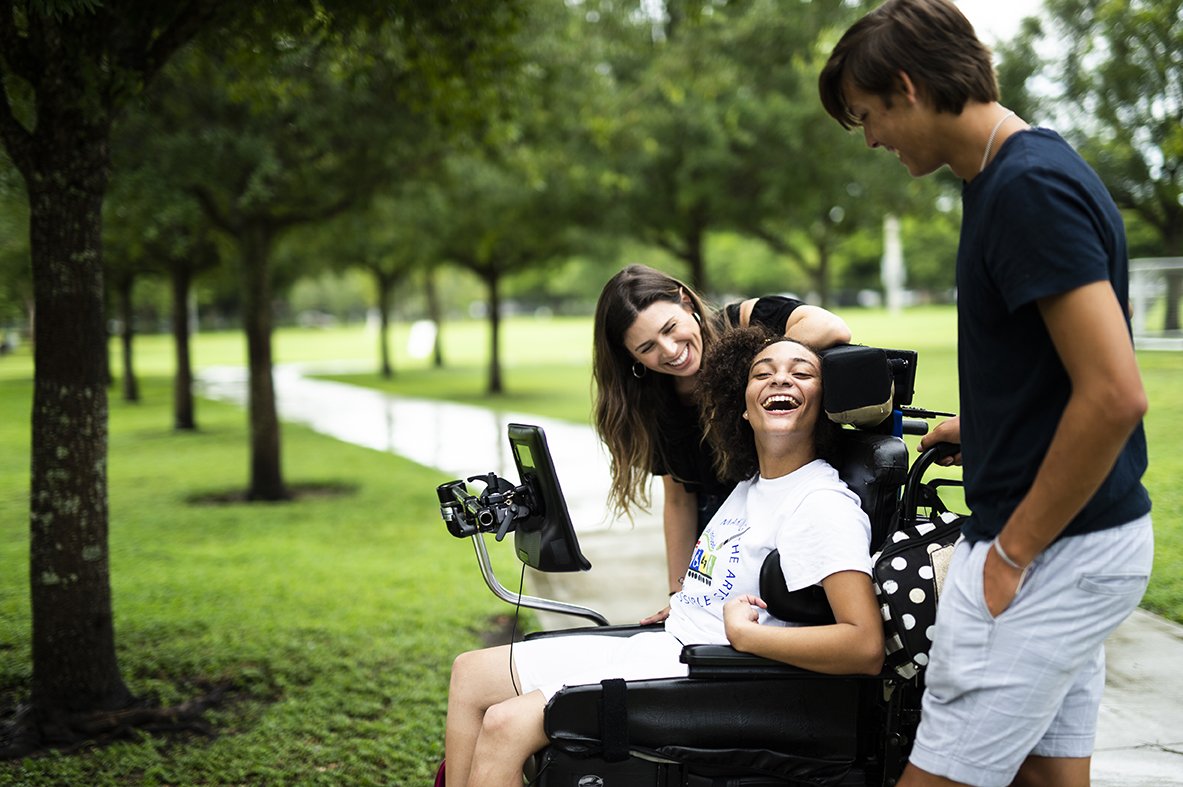Cradle
2021 | IxD Inclusive Game Design | MDes Project
IIT Institute of Design
Cradle is a tablet adaptation of the Cat’s Cradle string game in which two people manipulate and transfer a single loop of string into various shapes and forms using both hands. However, in Cradle, the string is constructed atop buildings, pivot points, shadows, and various geometries visible in street landscapes.
Cat’s Cradle and string games generally do not require language or speech and are not specifically tied to any one culture, they have been found in numerous indigenous cultures around the world.
In Cradle, the user may view their surroundings using the tablet’s built-in camera and generate cradles as a part of sightseeing. Alternatively, the user may want to explore distant locations around the world using the map feature.
Augmentative and Alternative Communication
The cradles are constructed and linked on points selected using Augmentative and Alternative Communication (AAC), specifically, Tobii gaze tracking. The user simply has to look at a geometrically significant point, such as the corner of a building, for a given delay time in order to select the point as an anchor. The delay time can be adjusted to various sensitivities using the lower right settings menu. An overlay feature, represented by the yellow eye icon, may be turned on to show lighted guides of available points to choose for any given site.
Cradle was designed for Augmentative and Alternative Communication (AAC) in which the user interacts via Tobii gaze tracking. Gaze tracking relies on eye movements to select, choose, and act on various features of the game. Cradle seeks to be inclusive of diverse audiences, specifically those who are unable to play traditional Cat’s Cradle due to mobility impairment. The game’s first-person perspective relieves users with neurological or developmental disorders the anxiety of social interaction or the pressure of time-based decision making. Cradle and traditional Cat’s Cradle are primarily spatial, pattern-based games, thus limited speech ability is needed to play. As the cradles are built upon real structures and cityscapes, the game empowers users to remotely experience places they may have not had the opportunity to visit in person. Images below show the prototype tested with Tobii.
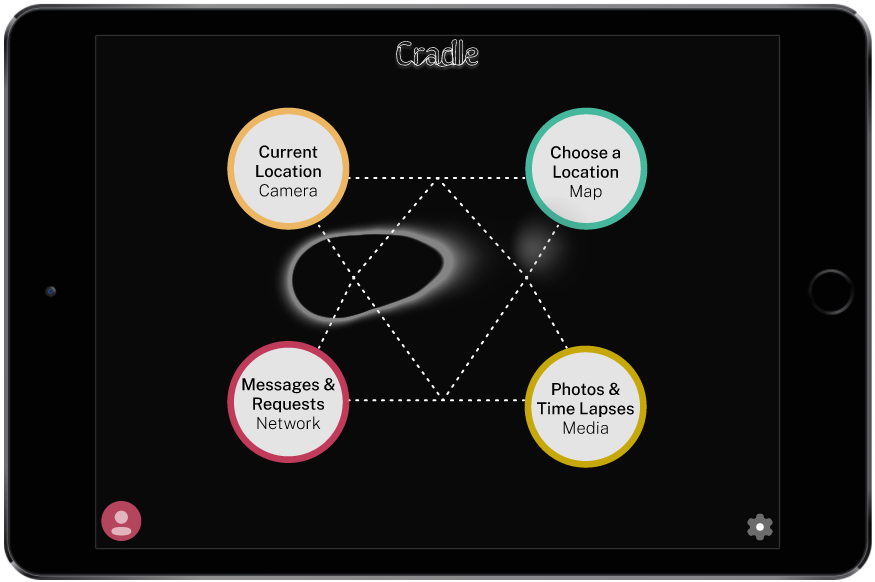
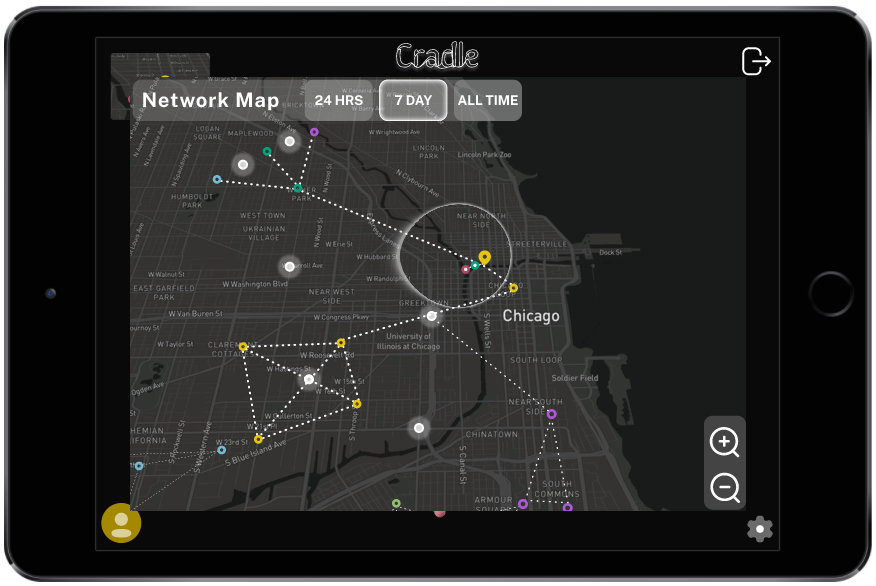
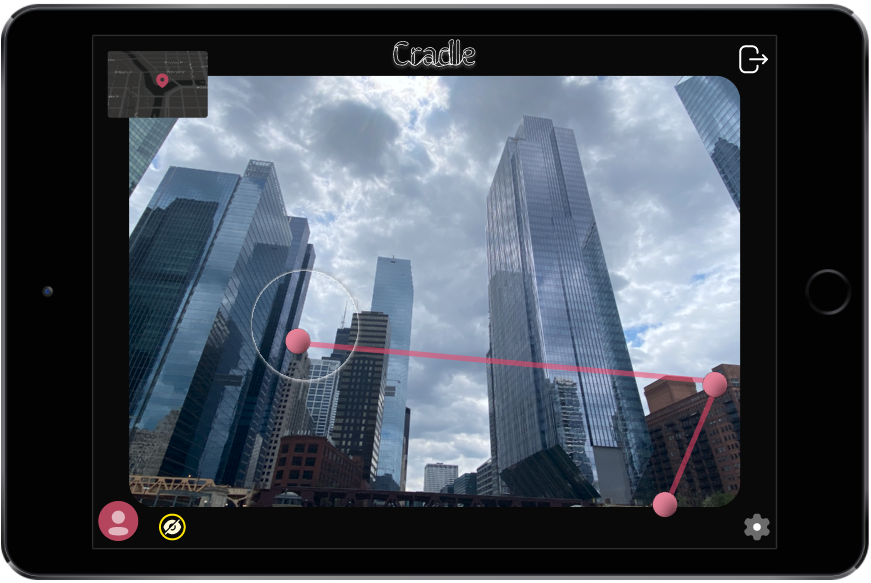
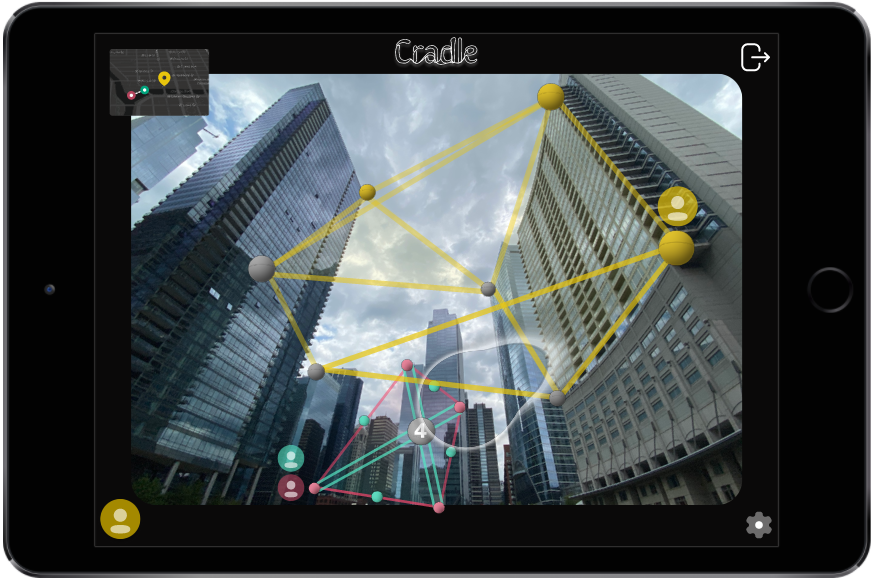
How to Play Cradle
If starting from scratch (no cradle existing in the location), the user must build the classic “Cradle” shape resembling the same starting position as Cat’s Cradle, anchoring the bottom four points onto vertices located on-site. From there, any user may manipulate the non-anchored points (shown in gray), transforming the cradles to string figures typical of Cat’s Cradle, or create entirely new forms.
If linking two separate cradles, the same number of moveable points must be available to link. When altering a cradle or linking cradles, users have the ability to leave messages to the cradle creators and take photos or time-lapse videos of their cradle construction and share with others or save to their device. Using the map feature, users can see current linkage opportunities shown in white pulse points which the Cradle algorithm has identified.
Game Longevity & Collaboration
Over time cradles fade and change. When first created, cradles are bright and lines are bold, with changes and transformations the colors and lines persist. But after the first 48 hours with no transformation from other users, the cradle colors fade and the lines grow thin. The Cradle algorithm initiates an untangle process once a week and, if left untouched by users, the game will straighten each cradle to its simplest perpendicular form over a course of weeks or months depending on the complexity. User activity is both moderated by the community contributing to the web of cradle networks, Cradle’s untangle algorithm, as well as the limited locations of anchor points driven by the physical environment. In some cases, users may send a request to their community to leave certain cradles unaltered for a given amount of time for special occasions.
The expansive networks enable users to play with their friends, strangers, or community members while engaging with their environment. The networks become virtual structures in a real world, evolving with the society in which it was created. Cradle was developed for gaze tracking interaction to both ensure the game remains inclusive of those who may not have the ability to play traditional cat’s cradle or explore the world. Gaze tracking also seeks to bring awareness to the significance of a gaze and the often ignored changes in one’s surroundings. Cradle can be an outlet for movement and expression, or a means of meditation where users can seek beauty in constructing mandala-like patterns. Cradle allows people to engage with their world in a new way.
Prototyping Process
In designing prototypes for Cradle I explored the gaze-tracking technology Tobii, TouchDesigner, a combination of Fusion360 CAD models with the augmented reality (AR) app AR Studio, as well as Figma. I was challenged with determining the best solution for presenting the concept and thus set aside the various tools and relied on Figma as the primary prototyping medium. In order to allow my classmates to test the game, Figma allowed for a gaze-like clicking as well as animated interactions that can bring the game to life. Ultimately designing for Tobii, testing with the intended user (people with different mobility abilities), and observing collective usage over time would be ideal to validate and advance this concept.
